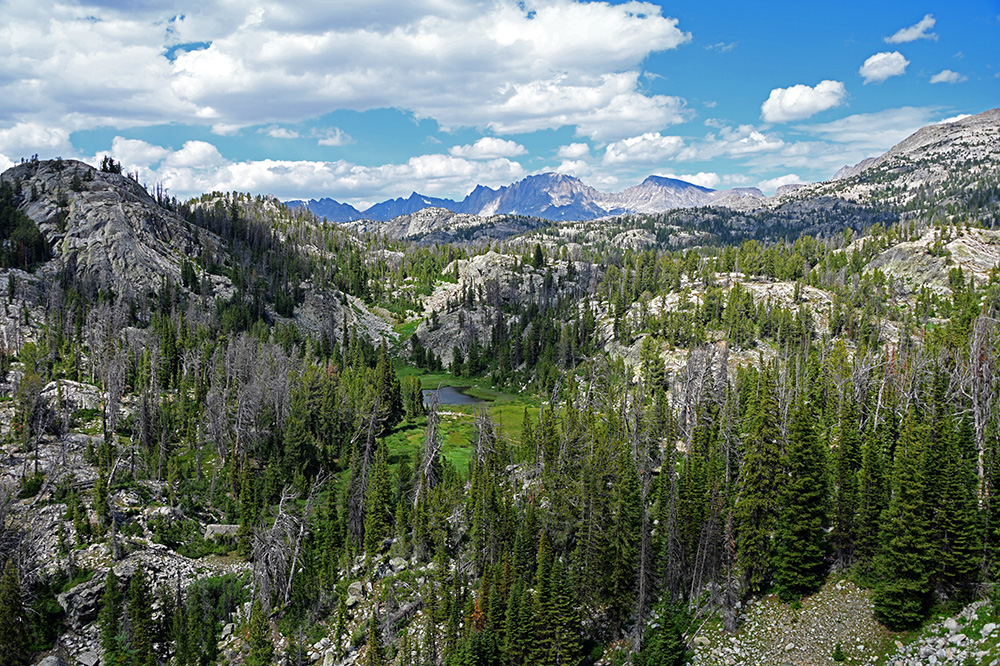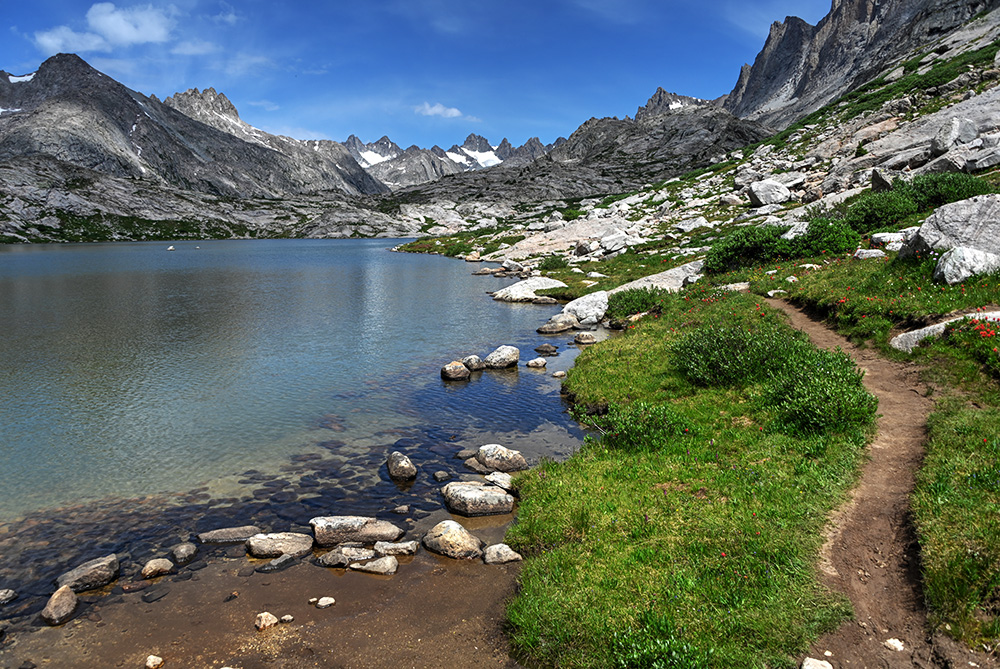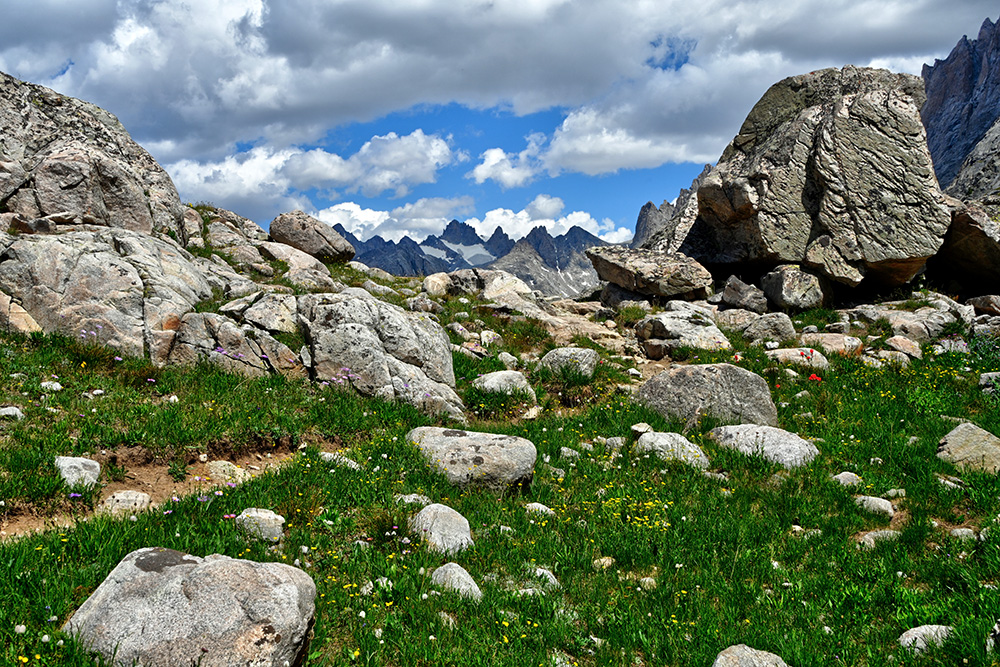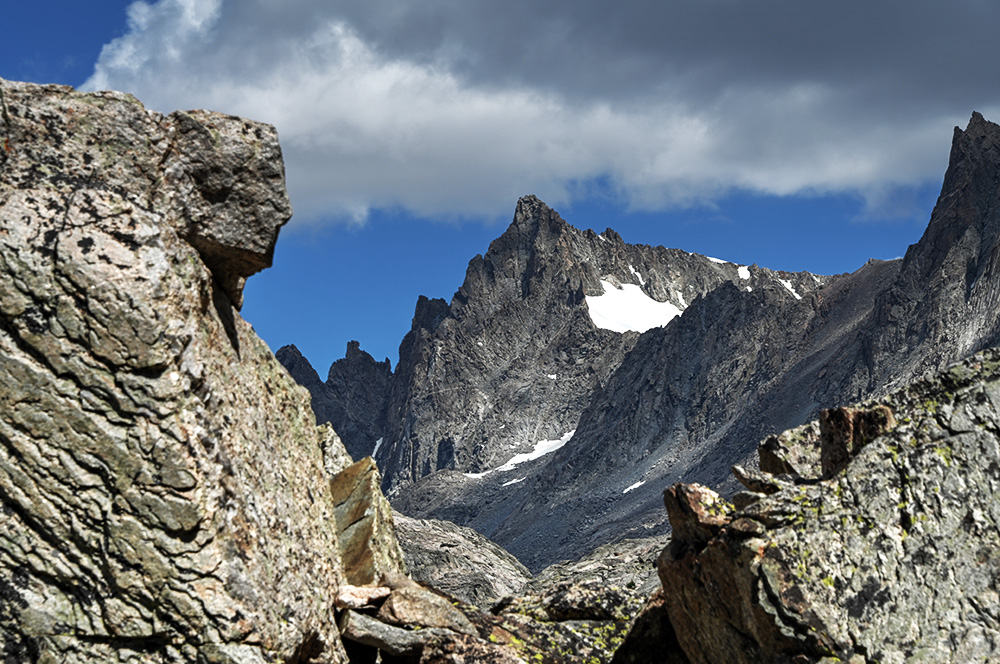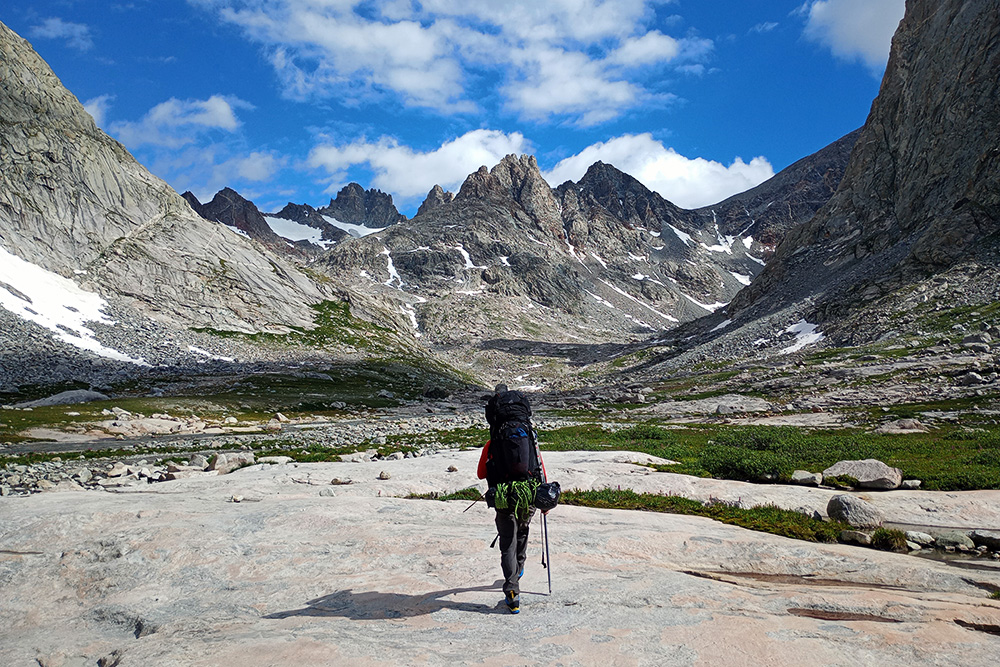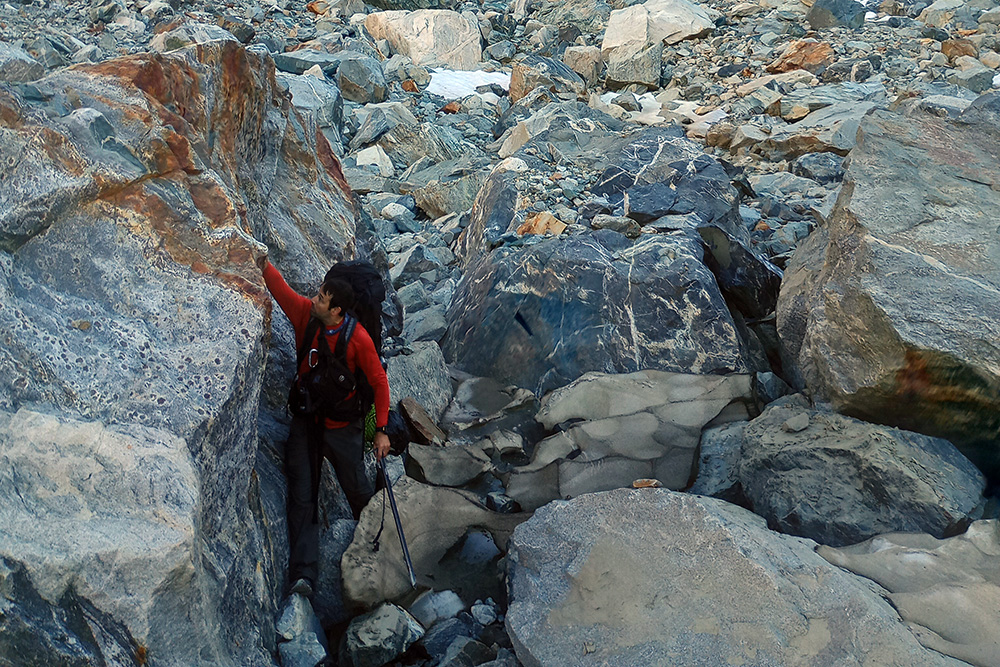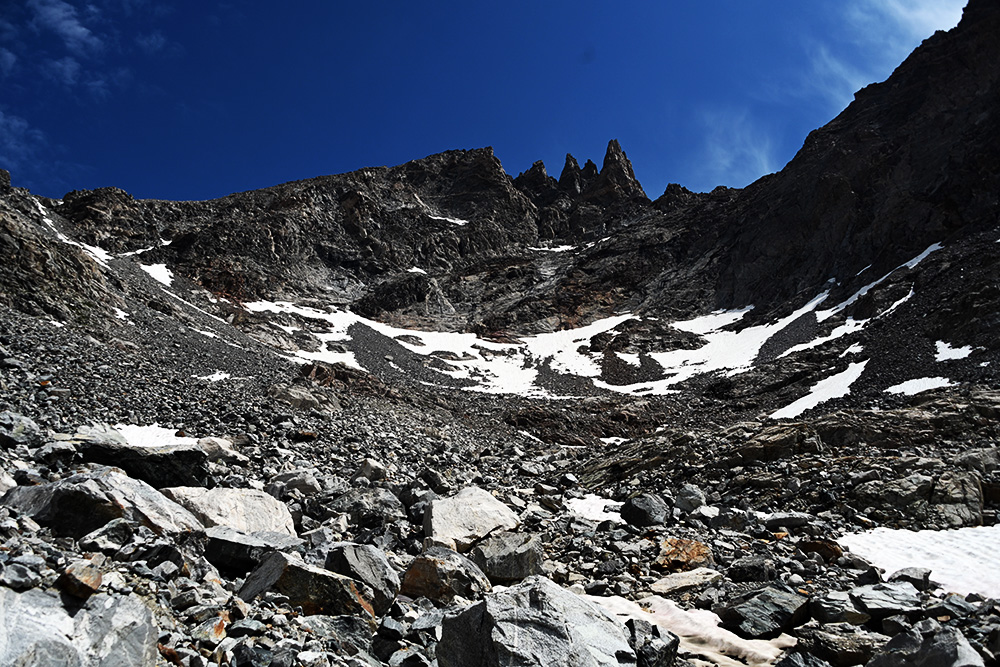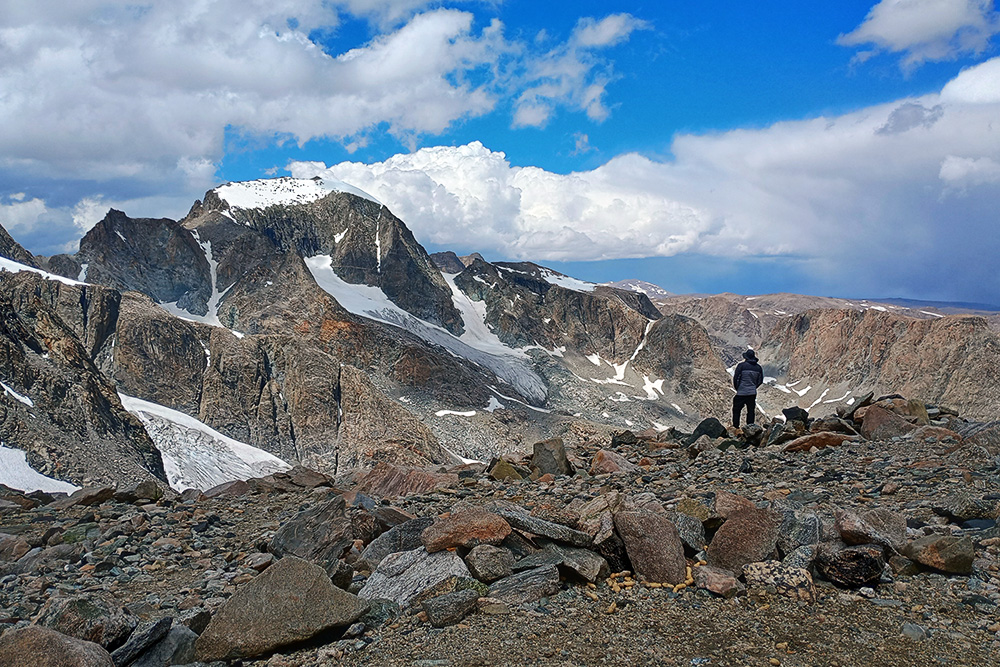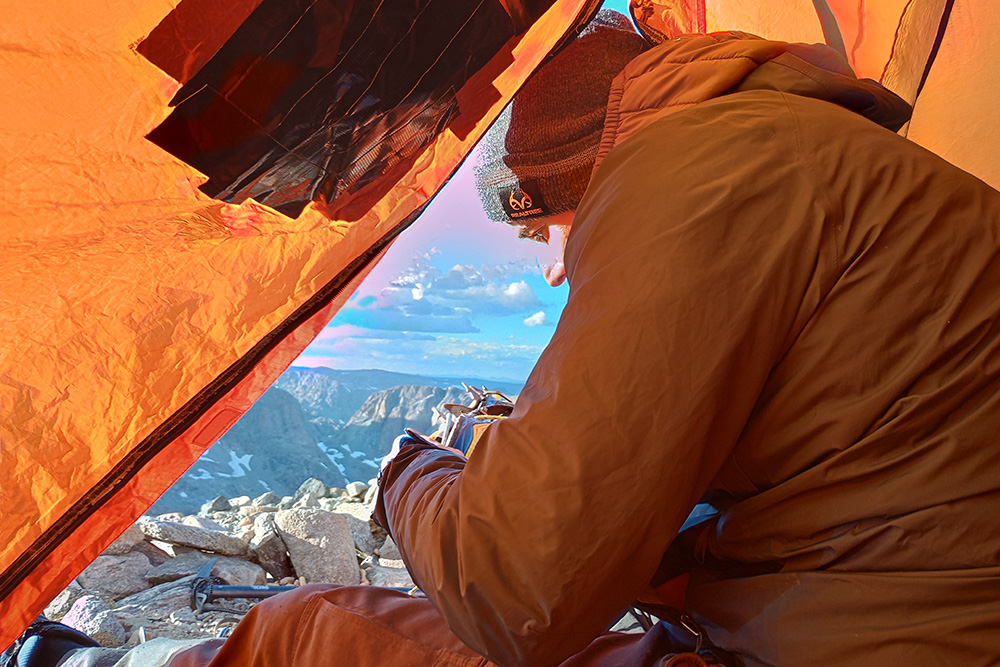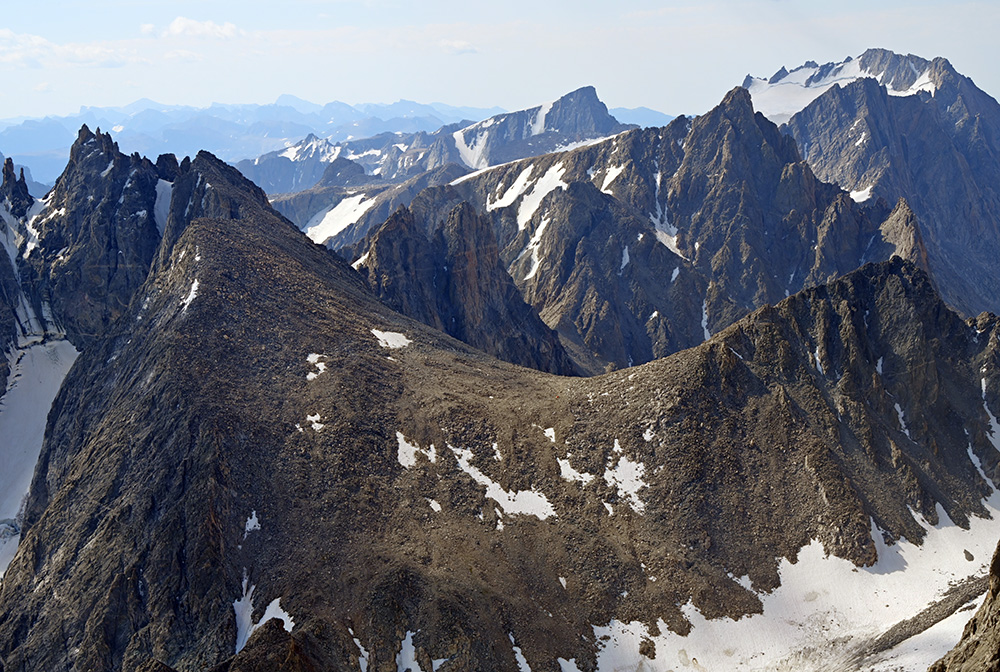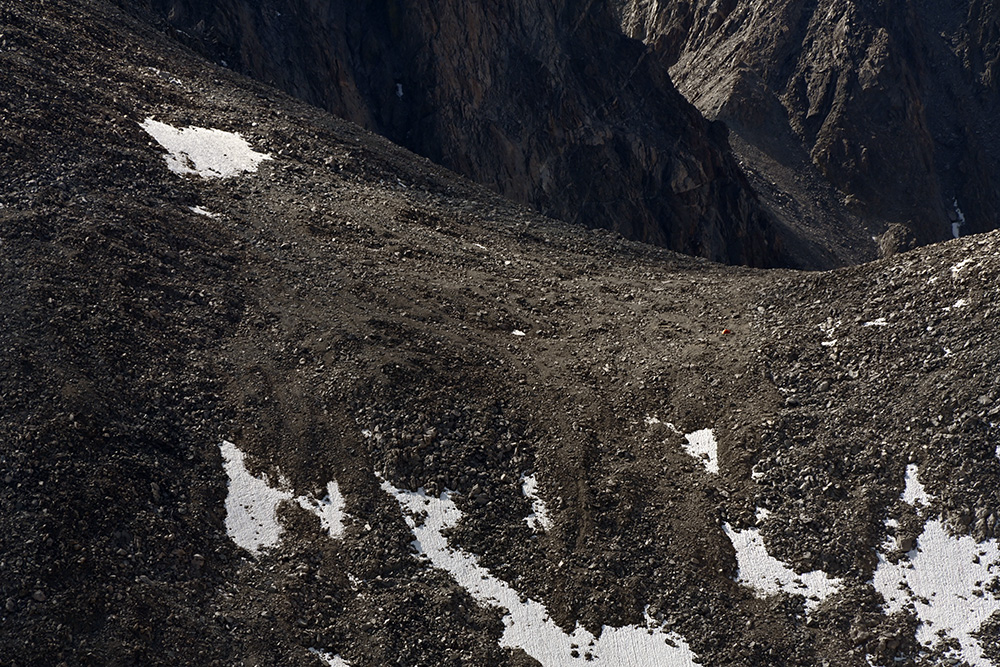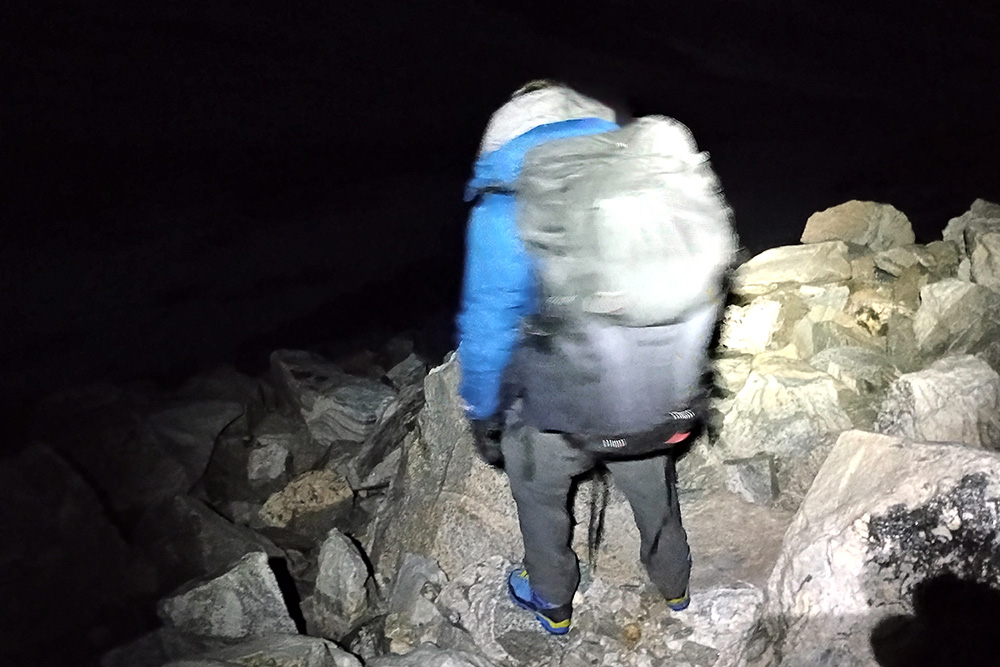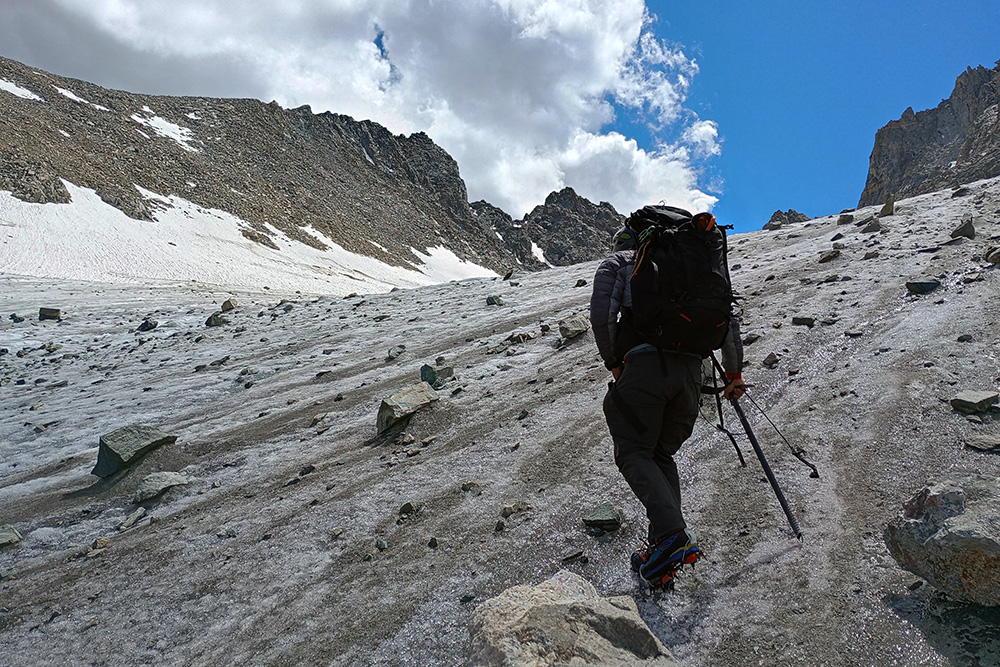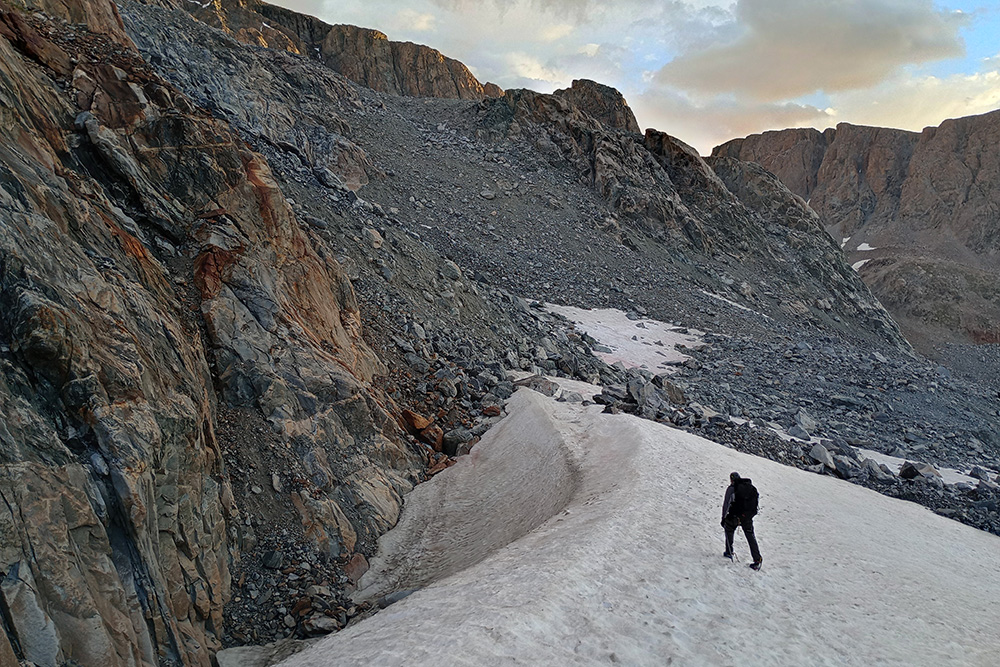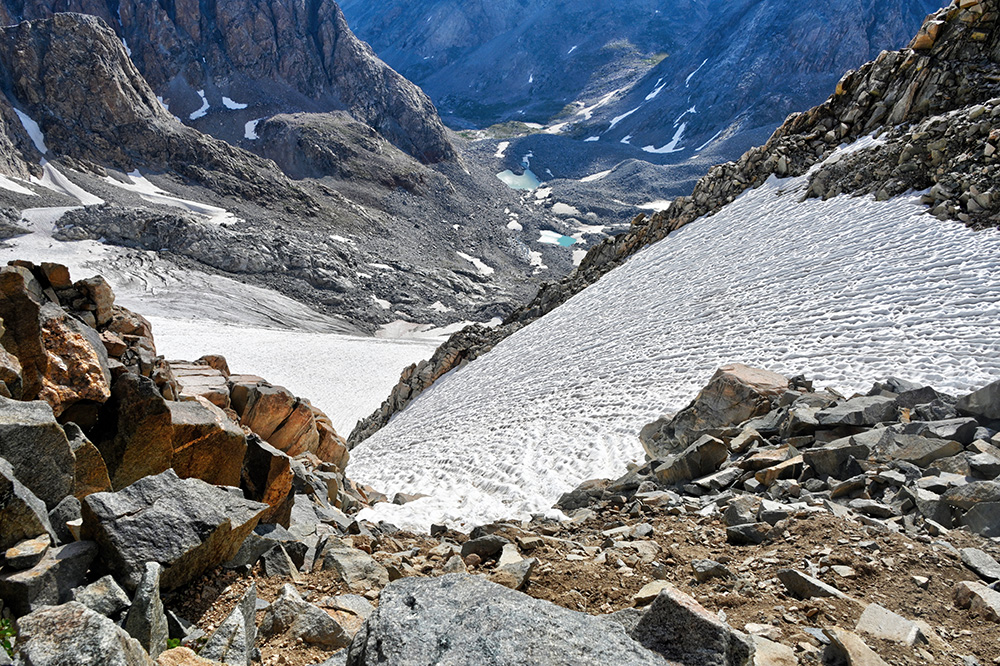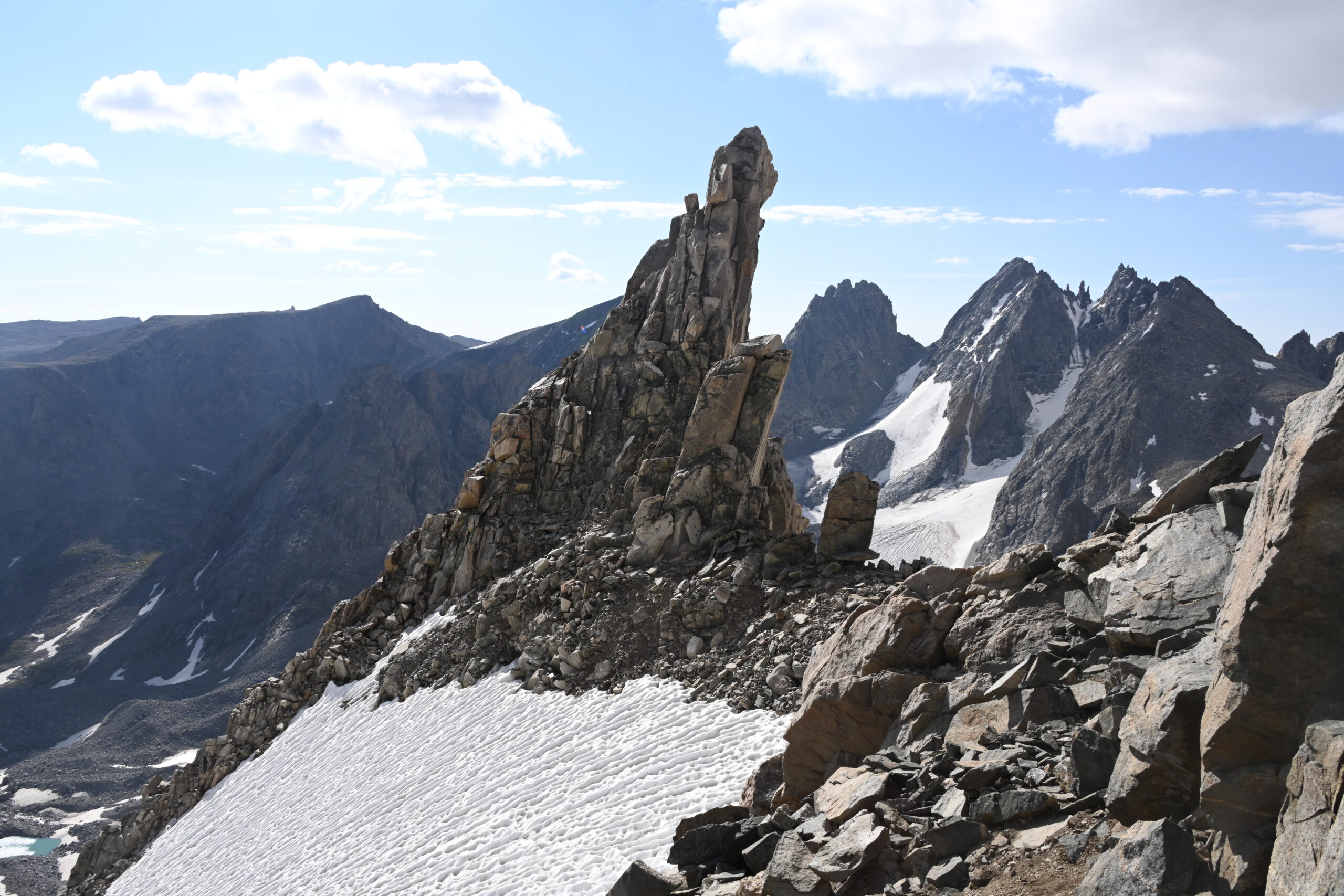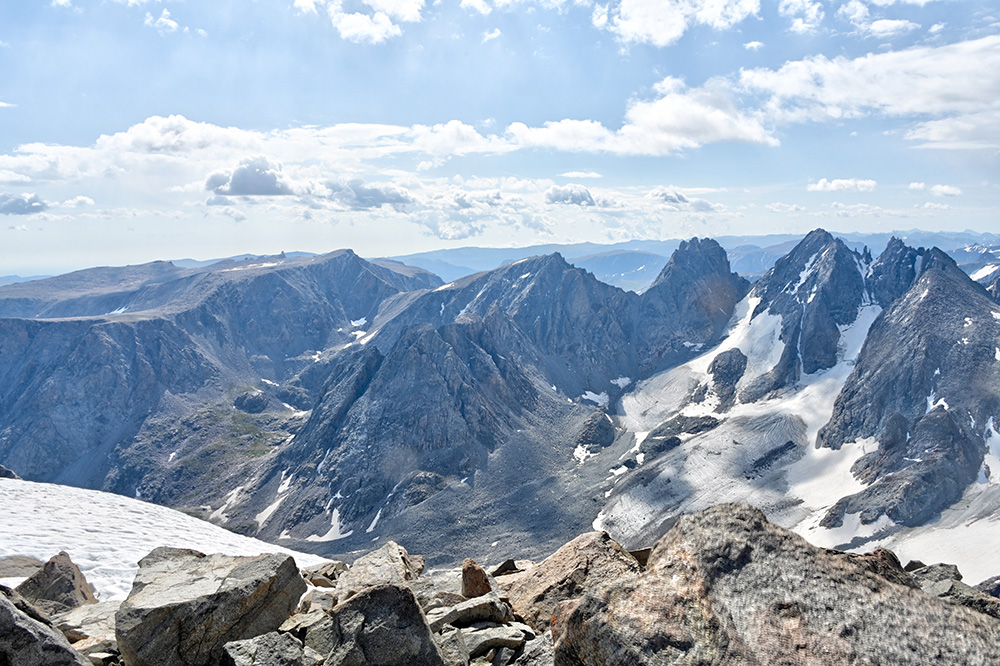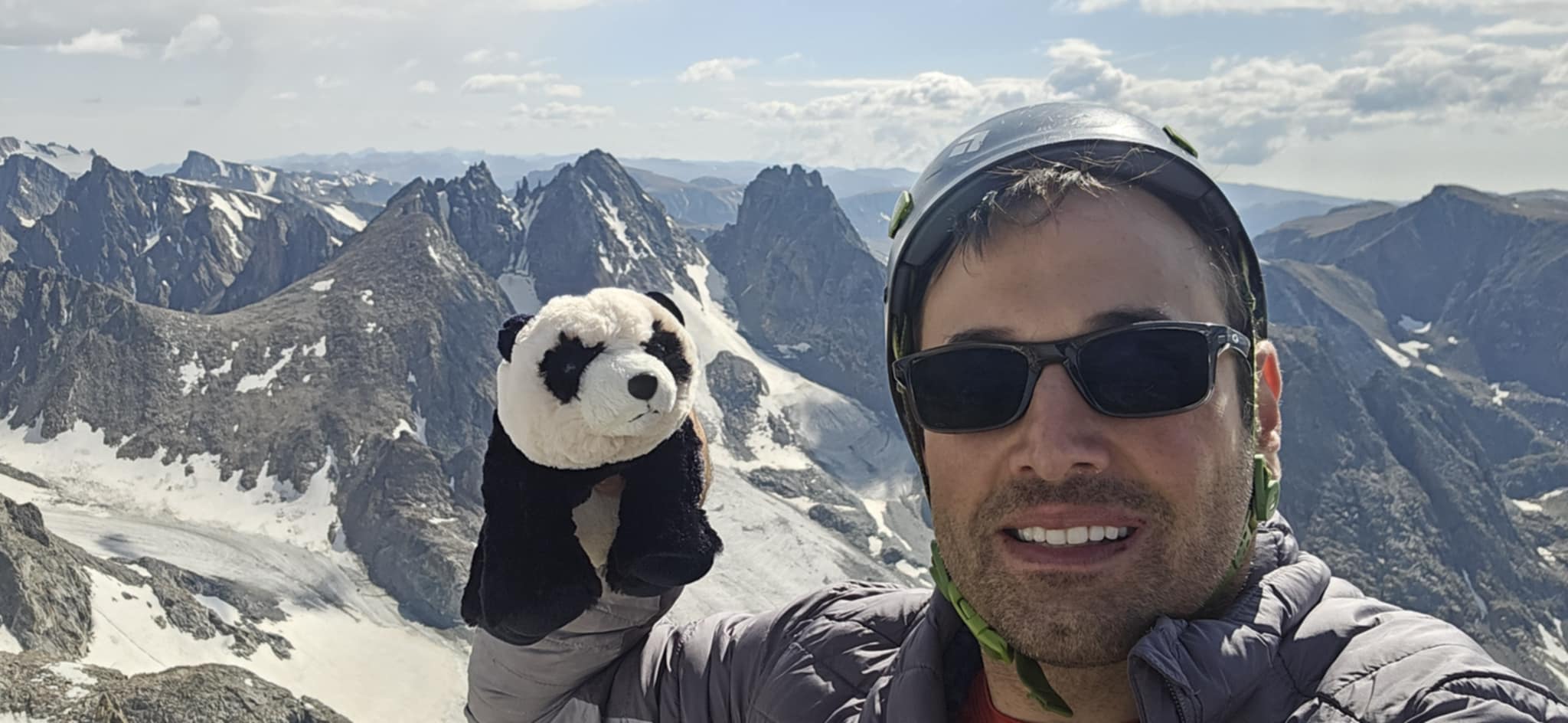Climbing Gannett Peak
Gannett Peak is the highest mountain in Wyoming, and in my opinion, likely the most difficult peak in the lower 48 unless you include highly technical routes. I had previously read that Granite Peak in Montana was more difficult than Gannett, and having done that two years before, I figured I knew what I was up against. I’ll say this was definitely more of a challenge than I expected, but it was absolutely wonderful to be back in the wilderness with a backpack and ice ax in hand. No doubt, part of the difficulty carrying 50lbs of gear at 10,000 feet after flying in from sea level, but either way, this is a real mountain that packs a lot of adventure!
There are several approaches to Gannett, but the Titcomb Basin or Glacier Trail are the two most common. I’ve heard the Glacier Trail is easier, because although it is five miles longer each way, that only adds up to about two extra hours of hiking, but most importantly you don’t have a horrible 2,200-foot hill to climb and descend on summit day. I still chose the Titcomb Basin, however, mostly because the route is supposed to be much more scenic. This photo is near the start, which, by the way, is already at 10,000 feet (3,000 meters)!
We took three days to approach Gannett, mostly because we flew in from sea level. I think carrying almost 50 lbs of gear at 10,000 feet without being acclimatized definitely made this feel much harder. On our first day, we did over ten miles and went about halfway to the mountain before camping at 10,300 feet. The second day, we went almost another ten miles and were only a few hundred feet higher in elevation. By then we had reached the Titcomb Basin, which had beautiful alpine lakes surrounded by colorful mountain flowers.
I should mention that one of the cruxes of this climb is dealing with the mosquitos. In our first camp, if you were to stand still for about sixty seconds, you would, without exaggeration, have about fifty mosquitos surround you. My friend and I had to come up with a plan to stand a hundred feet away and then sprint and dive into the tent to keep them out. On the second day, the terrain changed from woodland to alpine lakes with some intimidating mountains in the background. Our original intention was to climb the infamous Bonney Pass and camp on the other side, but carrying 50 lbs up and over Bonney Pass, which is just below 13,000 feet (4,000 meters) on our second day at altitude, seemed like a bad idea. We ended up camping a mile before the pass, and even though we were only a few hundred feet higher than our previous camp, the mosquitos here were drastically better!
On the morning of the third day, we had what we expected to be an easy day, just going up Bonney Pass and descending on the other side with all our gear. The altitude gain was over 2,000 feet (600 meters), but since we were already close to the base of the pass, we hoped it wouldn’t be too difficult. The photo above is me after leaving our camp on the morning of the third day. Below, you can see some of the easy scramble sections we entered once we began to near the bottom of Bonney Pass.
From a distance, Bonney Pass looks intimidating, but when we arrived, we found it was nothing crazy. This photo above shows the end of the Titcomb Basin, and you can see the slope rising up Bonney Pass to the left. We were inspired by a man we met the day before who was coming down from the summit and told us that Bonney Pass was harder than the summit due to all the loose scree. This motivated us as we went up the pass with all our gear, believing this to be the hardest day. The higher you go up the pass, the steeper the terrain gets, but we made it to the top in good time.
I’ve camped higher than 23,000 feet (7,000 meters) without oxygen for several nights, but I could tell going up Bonney Pass on our third morning with heavy packs was pushing it. After we reached the top of the pass, we had a sudden epiphany: why not just camp here? That way we wouldn’t have to carry our gear down and back up the pass after summiting. I hadn’t been serious about it, but my friend agreed, so we pitched the tent using existing rock rings to protect it from the wind. For the first time, we were able to see Gannett Peak with a front-row seat from our tent.
We ended up spending two nights here—the night we arrived, and the night after going for the summit. Both nights I prayed we wouldn’t have to suffer violent thunderstorms, but luckily the weather was great and conditions were good. These two photos show Bonney Pass from its other side. You can barely see our tent in the cropped photo below.
Most climbers seem to want to camp before Bonney Pass, then climb it the same day as summit day, leading to an atrocious total altitude gain of 5,000 feet (1,500 meters) on summit day. I really think camping on Bonney Pass, provided the weather was good, was the best decision we made. Since we were already up the pass, we didn’t have to wake up at midnight and instead began for the summit around 4:30 a.m. Here is me first leaving the camp. Below is a photo on the way back, but it shows a low-angle ice field you have to cross after descending. The ice wasn’t super steep, but without crampons, it would definitely be a death sentence! This was actually my favorite part of the whole climb, as there were lines of crystal-clear glacier water cutting straight through the ice that we had to hop over.
After crossing the ice field, we descended down some snow and began across the Dinwoody Glacier. The snow was super packed and easy to cross. At one point, we had remained too high, since we were trying to avoid as much uphill as we could, and came across some crevasses. They were easy to see and avoid, but we descended a few hundred feet and continued to the base of Gannett. The scree field in front of me is what I considered to be the start of the mountain. My friend and I ascended it, finding it to be similar to Bonney Pass in annoyance.
Once we climbed the scree, my friend mentioned he was feeling fatigued. We continued up a moderate snow slope, where he thought it was best to come to a stop. Luckily we had radios, so I continued to the summit. My next challenge was the crux—this very steep snow chute above. Also famous is the bergschrund, which confuses me to this day. Everyone frantically posts about the bergschrund, making it sound like if it is out then the mountain suddenly becomes either very dangerous or very technical. I saw posts three weeks before my trip warning that the bergschrund was already opening up, but when I arrived I saw no indication of any bergschrund. The climber that lied to me and said Bonney Pass was harder than summit day mentioned it was easy to scramble up the rocks anyway. I ended up passing the crux, unsure if the bergschrund exists on another snow chute that is easily avoided, or if it had opened up a month ago but magically closed after three more weeks of summer.
Once up the snow chute, I stood beneath Gannett’s famous pinnacle. From here, the only thing that remained was more scrambling up rocks, then the summit ridge. From all the photos I’ve seen, and even the way the ridge looked from Bonney Pass, it appeared pretty level and straightforward. I imagined once I made the ridge I’d just casually walk to the summit, but to me, this was the sketchiest part. I didn’t use crampons, which was probably a mistake, but the snow bit pretty well with my ice ax, and you generally could hold onto some rocks jutting out here and there. Either way, to me, this was the riskiest part of the climb. Sadly, a man the week before fell to his death near the summit, and once home I saw someone else online describe the ridge as spooky. In the photo below, you can see what the ridge looks like from the summit. It’s not terrible, but definitely not flat and easy!
While I should have definitely thrown my crampons on, the ridge at least didn’t take very long to cross. After a short time, I reached the small rocky summit of Gannett Peak, my last real mountain in my quest to hit all fifty state high points!
